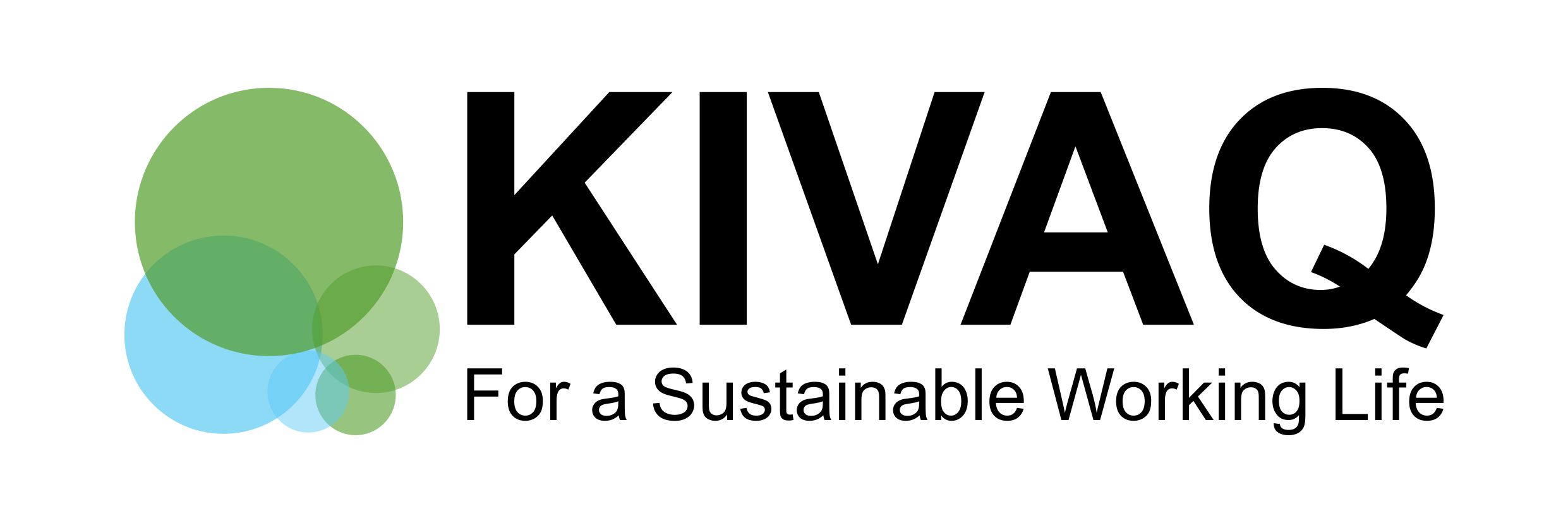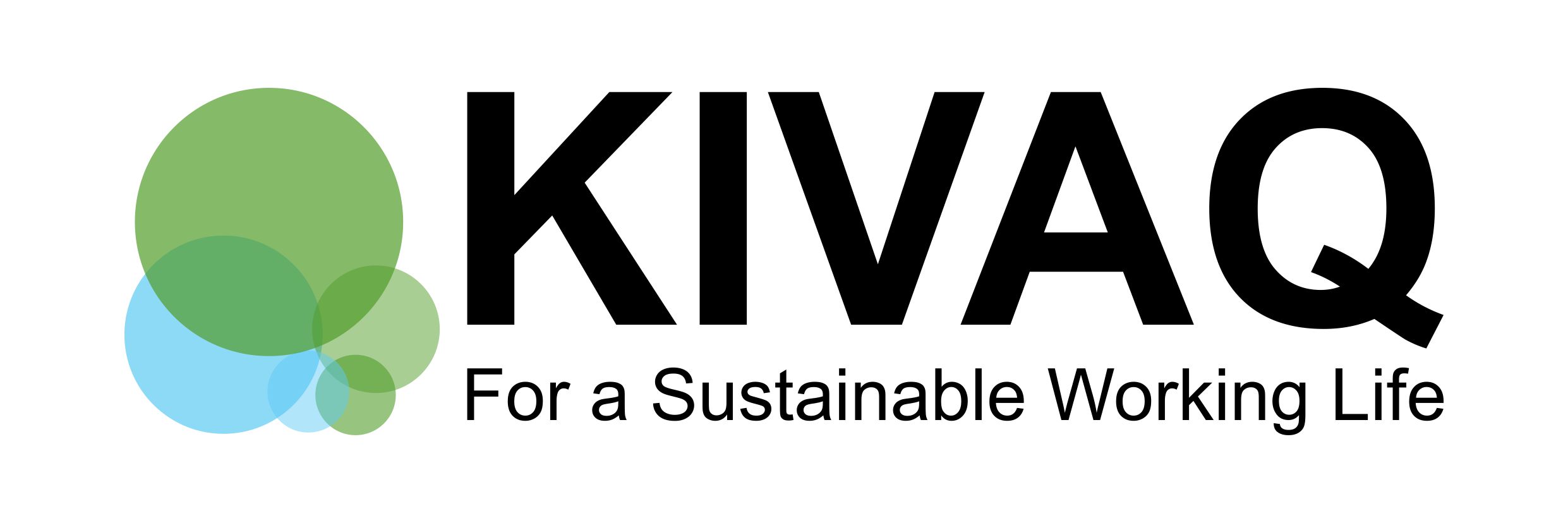VALIDATED QUESTIONNAIRE FOR MEASURING WELLBEING AT WORK
KivaQ W includes only variables that are based on practical experience and scientific studies known to be related to the individual perception of wellbeing at work.
Despite our shared understanding of the importance of wellbeing at work, there is as yet no clear and unequivocal definition of the concept. Professor Reiner Rugulies from the National Research Center for the Working Environment in Copenhagen emphasizes that, as for most abstract constructs, we might never be able to achieve a total consensus regarding the definition of the overall wellbeing at work concept.¹ Hence, it is important that the measurement tools used for measuring wellbeing at work in practice or for scientific purposes are developed by persons with vast experience and high expertise in the area.
The KivaQ W questionnaire is developed by Ove Näsman, MD, and specialist in occupational health. Näsman has over 30 years experience of practical occupational healthcare including various areas of wellbeing at work. In 2010 he was granted the “Work Wellbeing Achievement of the Year” award by the Finnish Association of Occupational Health Physicians for his commendable work with the KivaQ W questionnaire and the development of wellbeing at work in different organizations. During his career, Näsman has identified those dimensions that in practice have shown to be essential for the experience of wellbeing at work. In this way, a high level of content validity, based on deep knowledge and expertise, has been established when designing the measures included in the questionnaire. The content validity has further been examined by conducting a thorough literature review²to assure that the questionnaire measures are based on scientifically approved questions and theories used when researching wellbeing at work or its dimensions. At the same time, it is assumed that the variables cover the most important aspects of the concept we want to measure. The comprehensive literature review strengthens the quality of the KivaQ W questionnaire and also builds a strong theoretical basis for the measurement tool.
Based on the literature review a qualitative mapping was built and further tested with factor analysis.² The results of the factor analysis show that the first question, “Have you enjoyed coming to work in the last weeks?”, in itself explains a large part of an individuals experience of his/her wellbeing at work and hence, would justify a workplace wellbeing questionnaire including only this global question. Because the wellbeing at work concept is defined in various ways, Näsman has chosen to measure six other dimensions as well (meaningfulness, control, fellow-‐workers, leadership, job security, influence) as these dimensions in practice have shown to be very important for the overall wellbeing at work. The results of the factor analysis support this and show substantial loadings for each of the seven variables.²
The qualitative mapping, which is built based on the comparison of the KivaQ W variables with theoretical models for different dimensions of wellbeing at work and with questionnaires used in scientific research regarding wellbeing at work, is important also for achieving construct validity. Construct validity refers to whether the operational definition of a variable reflects the true theoretical meaning of a concept and if the questionnaire actually measures the abstract theoretical construct it claims to measure. The fact that the variables included in the KivaQ W questionnaire are derived from theoretical models and prior scientific research generates a sound foundation for attaining a high level of validity. ³
Because the rate of sick leave exceeding 2 – 4 % usually depends on something else other than the strictly defined illness sick leave, the KivaQ W questionnaire can be used as a concrete and reliable measure for wellbeing at work. The KivaQ W questionnaire results have shown to correlate with changes in sick leave levels.3 This indicates that the KivaQ W questionnaire really measures the abstract concept it is developed to measure.
The KivaQ W questionnaire also has a high level of face validity. Solely by reading through the questions, one understands that they measure an individual’s perceived well-being at work. Hence, the questionnaire is especially well suited for practical use in organizations. Questionnaires developed for practical use should achieve a high level of face validity for the respondents to be motivated to answer the questionnaire and for organizations to attain high response rates.
¹ Rugulies, R. 2014. Wellbeing and psychosocial work environment. 3rd International Wellbeing at Work Conference 26th-‐28th May 2014. Copenhagen, Denmark.
² Nylund, M. 2013. Arbetsklimat, arbetstillfredsställelse eller stress?– en validering av Kiva-enkäten med data från FEELIT projektet. Institutionen för Företagsledning och Organisation. Hanken Svenska Handelshögskolan i Helsingfors.
³ Näsman O. Ahonen G. Ilmarinen J. 2012. The Metal Age method and the Kiva-questionnaire: Finnish methods for participatory development of well-‐being at work, productivity, and profitability. 2nd International Wellbeing at Work Conference 21st-‐23rd May 2012. Manchester. Great Britain.

